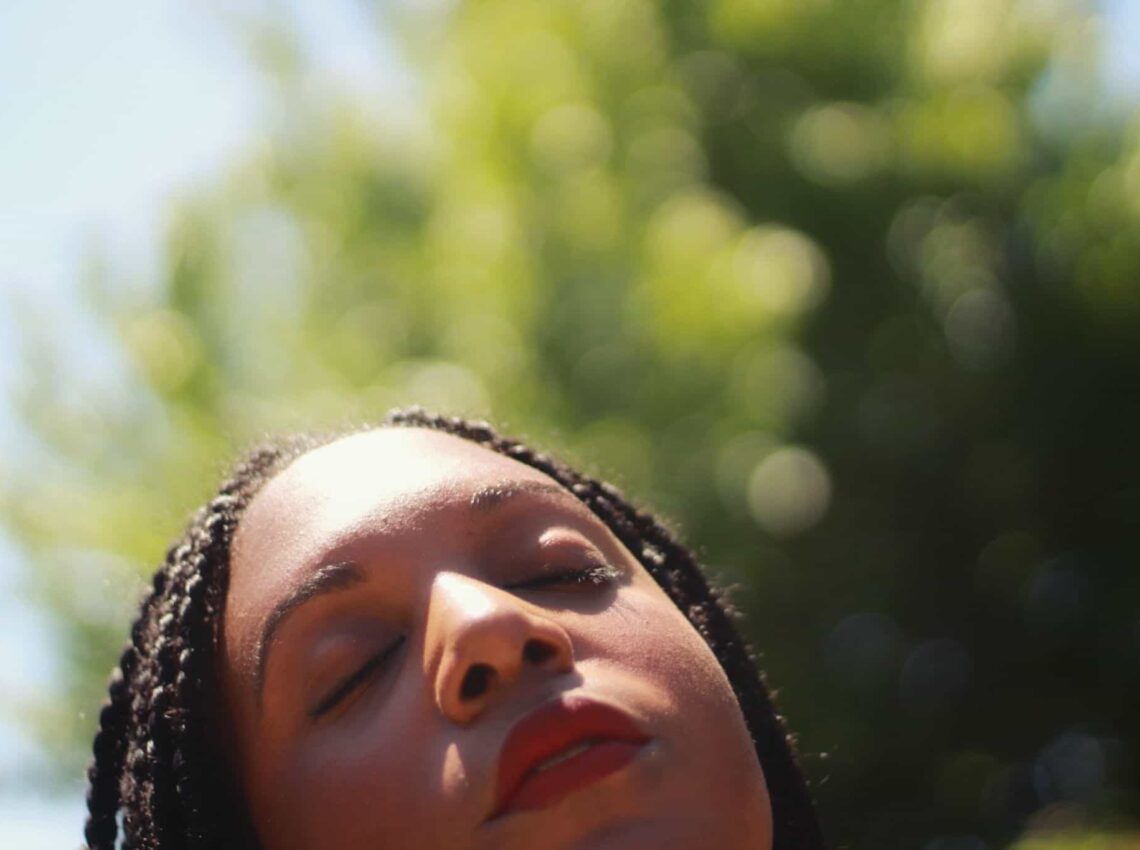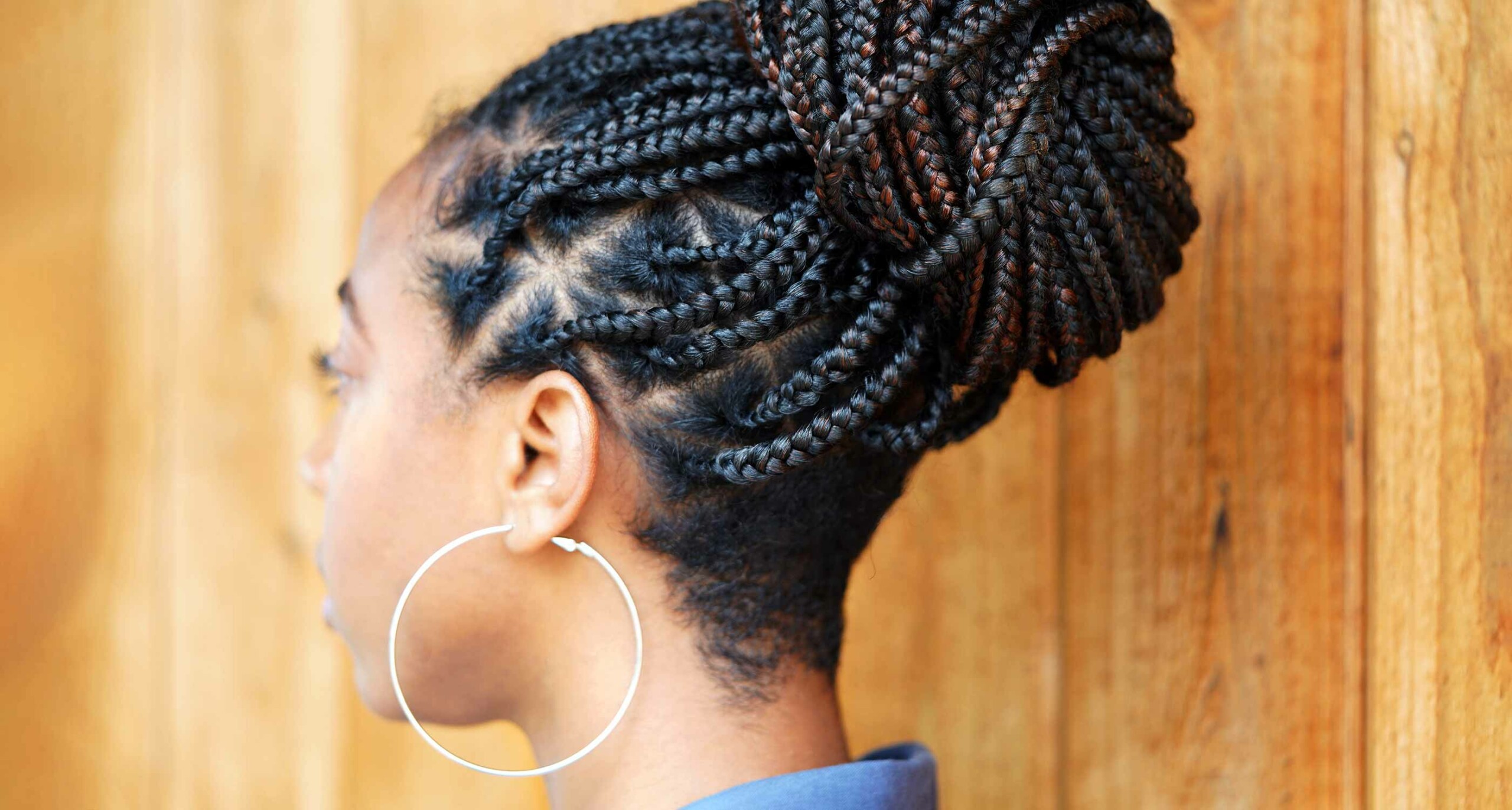The Difference Between Knotless Braids and Box Braids

Box braids are a timeless hairstyle that many have trusted to keep their natural hair protected and healthy. But lately, there has been a new beauty trend gaining popularity and taking over social media feeds: knotless braids. While the two styles are similar, knotless braids use a different feed-in technique that requires less tension and is gentler on the scalp. The result is lightweight, pain-free braids with all the style and versatility of the more traditional box braids.
Let’s take a closer look at box braids and knotless braids so you can decide which style is best for you and your hair. To help us get a better look at the total package, we’re going to break each type down into five factors: technique, cost, installation, duration, and styling. Then we’ll look at why you may want to consider one hairstyle over the other because one is not inherently better than the other, and you must consider what your unique needs and wants are for your styling. If you want knotless braids or box braids, book a hair appointment online with a StyleSeat pro!

Box Braids
Before we dive into the trending new style, let’s start with the classic box braid. There are many popular methods for how to style box braids. While this braid has been around for a while, it is essential to understand the details of the style if we’re going to compare it to a knotless braid. Let’s get started!
Technique
After prepping your hair, the stylist will section it depending on your desired braid size. From there, your braider will grab an appropriate amount of pre-stretched braid hair and gather a section, looping it together in three equal parts. The feed-in technique then requires your stylist to hold your natural hair section, pulling it taut, and divide it into two sections. In a quick series of loops, your stylist will create a knot that holds the synthetic braiding hair into place at the root of your natural hair and begin braiding.
Cost
If you are interested in this style you might question, how much do box braids cost? The cost to have box braids installed by a stylist varies depending on several factors, including the size of the braid, its intricacy or styling, your location, the stylist you choose, and their expertise. Typically, the smaller the braid, the more expensive it will be to have them installed. If you live in a large metropolitan area or choose a well-known stylist (or one specializing in braids), you should also expect to pay more. With that said, box braids generally cost anywhere from $75 to $450.
Installation
When it comes to installing your braids, it will depend on the size. Once again, the smaller the braid, the longer it will take to install and style. Micro braids will take about nine to 12 hours, and you may be asked to come back over two or three days to accommodate the stylists’ schedules. Small braids require about seven to eight hours of work to install, medium ones will take around five to seven hours, large braids approximately three to six hours, and jumbo braids may take anywhere from 45 minutes to three hours for installation. The time it takes to complete your install may also depend on your stylist and their expertise.
Duration
Before you get this hairstyle, you might ask how long do box braids last? In terms of how long your box braids will last once completed, it will again depend on their size. In general, you can expect smaller braids to last longer than larger ones. More specifically, micro braids should last about 10 to 12 weeks, small and medium ones approximately eight to 10 weeks, large braids about six to eight weeks, and jumbo braids won’t last longer than about six weeks. However, these are just estimates, and the duration of your box braids will also depend on your stylist, their technique, and how well you care for the braids. Check out our guide on how to wash your box braids properly to help you get started.
Styling
This style is popular because of its low-maintenance versatility that keeps you looking effortlessly chic. The only real disadvantage to box braids when it comes to styling is that the knot lifts the hair off your scalp due to the feed-in technique used. However, micro, small, and medium braids can be styled in a variety of updos; large and jumbo braids are a statement-maker all on their own.

Knotless Braids
While this technique has been around for some time, it has increased in popularity thanks to social media and being prominently featured on celebrities like Beyonce and Zoe Kravitz. But before you jump in, let’s take a closer look at this style.
Technique
Probably the most critical difference between these two braid styles is the feed-in technique used. While traditional box braids create a knot at the base of the hair and immediately feed in the synthetic braiding hair, knotless braids begin by braiding your natural hair and then gradually layering in the synthetic hair. This creates a style that is flatter to the scalp and requires far less tension to hold everything in place.
Cost
Generally, knotless braids run a similar price to traditional box braids though they are slightly more expensive for several reasons. First, it is a popular style that fewer braiders are skilled at. That means those stylists who book these appointments are more in demand. In addition, the technique does take a bit longer to install, requiring more of the stylist’s time which comes at a premium. However, similar to traditional braids, the cost of your knotless braids will depend on their size and intricacy, your location, and your stylist. Typically, medium waist-length braids will cost about $250, plus any synthetic hair you’ll be using. So, you can estimate the cost for different sizes and lengths from that starting point.
Installation
Depending on their length and size, you should expect your knotless braids installation to take about five to six hours. Like traditional braids, you should adjust that time up for smaller or longer braids and adjust it down for larger or shorter braids. Again, the time it takes to install your knotless braids will also depend on your stylist and their expertise in the technique. For example, a stylist who is learning or new to knotless braids may be cheaper to work with, but they will most likely be slower and have to stop frequently to have their supervisor check their work.
Duration
As a result of their feed-in technique, knotless braids do not last as long as traditional box braids. In general, you should expect any knotless braid to last about six weeks, depending on your natural hair texture. However, you can get the maximum wear out of this style with the proper care and maintenance routine.
Styling
Perhaps the most notable difference for those styling their knotless braids is that they lay flatter to your scalp because the feed-in technique does not require a knot to hold the style in place. This creates a more natural look that can be styled just as easily as traditional box braids, depending on their size, of course.

Choosing Your Style
While these two styles are very similar, some significant differences between the two should be considered when deciding which kind to try. In general, most stylists will recommend that you do not wear any braid style longer than eight to 10 weeks as it can be damaging to your scalp and edges. That said, knotless braids require less tension and are therefore less damaging overall.
So, when it comes to box braids versus knotless, which should you choose? If you have a sensitive scalp, suffer from any sort of traction hair loss, or just want a pain-free braiding experience, we’d encourage you to give the knotless braid a try. But if you are aiming for a longer-lasting braid, traditional box braids may be a better fit. You may also want to consider knotless braids as an alternative in between traditional box braid installations. This will give you the styling you want while also giving your scalp a break from the tension associated with box braids.
There you have it! All the most important things to know when considering box braids or knotless braids. Still have questions? Reach out to a StyleSeat Pro to talk about your unique concerns and needs.


